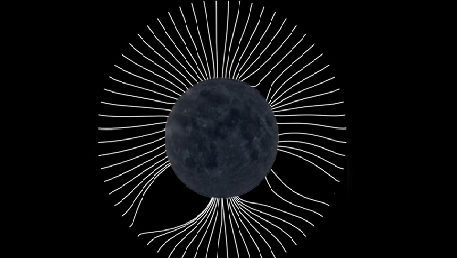A group of Indian scientists predict how the Sun’s atmosphere, Corona, will look like during the total solar eclipse to occur on August 21. It is important to understand the corona, which affects the space weather near the Earth, where they can be dangerous for satellites and telecommunication.
Pune (ISJ) – A group of Indian scientists have predicted how the Sun’s atmosphere, the corona, will look like on 21 August, when it will be visible during the total solar eclipse to occur on that day. The corona is still not fully understood. Solar storms originate in the corona, and affect the space weather near the Earth, where they can be dangerous for satellites and telecommunication. Hence, it is important for us to understand the corona, and comparing this prediction with actual observations during the eclipse will tell us how well we understand it.
In what has come to be referred as the Great American Eclipse, a total solar eclipse will sweep across the United States on 21 August 2017. From the ancient times to the present, human beings have viewed such magnificent astronomical events with a mixture of awe and curiosity. Given the scientific and technological advances made in astronomical observations in modern times, this eclipse will offer unprecedented opportunities for studying the Sun’s million degree outer atmosphere known as the corona. Scientists across the US have geared up to make a diversity of scientific observations of this eclipse.
A team led by Indian scientist Dibyendu Nandi from Center of Excellence in Space Sciences India (CESSI) at Indian Institute for Science Education and Research (IISER), Kolkata has predicted the expected structure of the solar corona which will become visible during this eclipse. The team comprises of graduate and undergraduate students of IISER Kolkata as well as a scientist from Durham University, United Kingdom.
Over many decades, scientists have been puzzled by the extremely high temperature of the Sun’s corona, which can be hotter than a million degrees. It is now understood to be due to the presence of Sun’s magnetic fields, although the exact process of coronal heating is still hotly debated. Magnetic field structures in the Sun’s corona also generate violent solar storms that create hazardous space weather. When these storms reach the Earth, they can threaten our satellites, telecommunication and GPS networks and can even bring down electric power grids. Hence it is very important for humanity to be able to prepare for adverse space weather through prior predictions of such solar storms from the corona.
Coronal magnetic fields are notoriously difficult to measure under normal circumstances since the corona is much more faint than the disk of the Sun. This necessitates the development and use of theoretical and computational models to understand the problem of coronal heating, and in turn, the origin of solar storms and severe space weather. This India-led study and modelling that aims to predict the Sun’s coronal structure is important for the world in this respect. Their prediction of the appearance of the corona during the eclipse is one of only two predictions, highlighting the difficulty of this challenge that many groups around the world are not yet ready for.
Solar eclipses offer a way around the problem of observing the corona. In a total eclipse, when the Moon blocks out the Sun’s disk, the faint light from the corona becomes visible! This allows us to see coronal structures and understand the magnetic fields that produce them. Therefore the Great American Eclipse will allow testing of our theoretical models and lead to their refinement through an assessment of what went right and what went wrong with the predictions.
The India-led team has predicted an intricate structure of the corona that is a result of computing the evolution of the magnetic fields of sunspots on the solar surface over many years. Their predictions shows lotus petal-like shapes extending from the surface in some parts of the Sun’s corona, while in other parts, magnetic field lines fan out like spokes of a wheel from the Sun and into inter-planetary space. Scientists expect that comparison of eclipse observations with these simulations will help them understand our star and how it influences our space environment.


